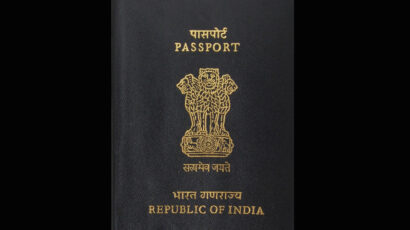Biden’s immigration bill may add 3,75,500 more green cards annually

Photo Courtesy: President Joe Biden-Facebook
The Biden administration’s proposed immigration bill would increase annual green card numbers by 35%, a study conducted by an immigration firm Boundless estimates.
According to the estimate, the number of immigrants receiving lawful permanent residency (a “green card“) would rise by nearly 3,75,500 each year if the U.S. Citizenship Act comes into force, making the total to about 1.5 million annually. The current baseline is just under 1.1 million green cards per year, using the annual five-year average across the Fiscal Years 2014 to 2018.
The greatest increases would be in the employment-based categories and the Diversity Visa program. If the bill passes, an additional 80,000 advanced degree workers would be granted permanent residency, along with more than 78,000 “first preference” workers (people with “extraordinary ability,” university professors and researchers, and executives or managers at multinational companies). The number of Diversity Visas would increase by more than half, from 50,000 to about 120,000 per year, the study said.
Unlike the a previous analysis by the non-partisan National Foundation for American Policy (NFAP), which projected a slightly lower 28% annual increase in future green card numbers, Boundless included the bill’s increase in some other visa categories which was excluded by NFAP.
However, Boundless used NFAP’s assumptions about which categories would likely experience increased demand.
Here are the key changes that the U.S Citizenship Act would make in legal immigration according to Boundless:
Spouses and minor children of permanent residents: This category would no longer be capped, as is already the case with spouse, minor children, and parents of U.S. citizens.
Employment-based immigrants: Spouses and minor children of the sponsored worker would no longer count toward annual green card caps.
In addition:
Graduates from U.S. universities with a PhD in a STEM field (science, technology, engineering, and math) would not count toward green card caps.
More green cards would be available for employer-sponsored workers in fields that do not require a college degree.
More “special immigrant” green cards would be available for Syrian nationals who assisted the U.S. military.
Diversity visas: Spouses and minor children of the primary applicant would no longer count toward annual green card caps.
Humanitarian visas: More U visas—and ultimately green cards—would be available for victims of domestic violence and other crimes who cooperate with law enforcement.
“Just because the bill raises a visa cap does not necessarily mean that all of those green cards will be used in a given year,” said Doug Rand, Boundless co-founder and immigration policy expert.
If welcoming several hundred thousand more permanent residents to the United States each year sounds like a lot, it’s not, added Rand.
The United States currently issues far fewer green cards compared to its peer countries. Canada and Australia, for instance, offer permanent residency to more than twice as many immigrants, and New Zealand triple as many, compared with the United States on a population-adjusted basis, the Boundless report said.
With the falling birth rate in the United States, “an approximate 37% increase in annual immigration levels is required to help maintain the current age dependency ratio by 2060 and reduce the ill effects associated with significant demographic decline,” according to the National Immigration Forum, an immigrant advocacy group.















